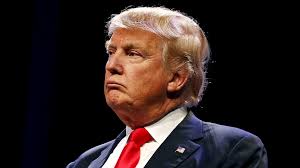U.S. President Donald Trump stated that his tariff policies are geared towards revitalizing key industries such as military equipment and advanced technology, rather than low-cost consumer goods like sneakers and T-shirts.
Speaking to reporters before boarding Air Force One in New Jersey, Trump echoed sentiments previously voiced by Treasury Secretary Scott Bessent, who downplayed the necessity of a “booming textile industry.” Trump emphasized a vision focused on high-tech and defense production, asserting, “We’re not looking to make sneakers and T-shirts. We want to make military equipment. We want to make big things… chips and computers… tanks and ships.”
Trump’s remarks triggered pushback from the American Apparel & Footwear Association (AAFA), which argued that tariffs disproportionately impact the textile industry and, by extension, American consumers. “With 97% of the clothes and shoes we wear being imported… more tariffs will only mean higher input costs for U.S. manufacturers and higher prices that will hurt lower-income consumers,” AAFA President Steve Lamar said in a statement.
Since his first term in 2016, Trump has consistently leaned into protectionist trade policies, appealing to a base of working-class voters disillusioned by decades of industrial job losses. While his administration’s tariffs have aimed to stimulate domestic production, critics argue that they have raised consumer prices and strained international trade relationships.
Last week, Trump reignited his aggressive trade posture by proposing a 50% tariff on European Union goods and threatening a 25% levy on imported iPhones. However, he softened his stance on Sunday, postponing the EU tariff implementation to July 9 to allow time for negotiations with the 27-nation bloc.
Despite the emphasis on industrial resurgence, the U.S. economy remains tightly interwoven with global supply chains, especially in sectors like textiles, where cost-efficiency drives overseas production. Trump’s remarks underscore his ongoing focus on national security and strategic manufacturing, signaling a continued shift away from consumer-oriented industries toward sectors he deems critical for America’s future competitiveness.
As Trump seeks to solidify his manufacturing-first legacy, the tension between economic protectionism and global trade integration remains at the forefront of the policy debate.

